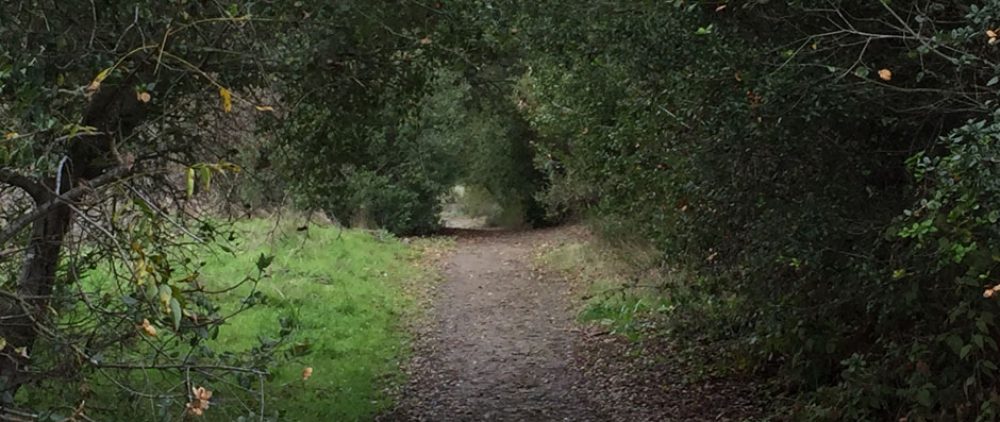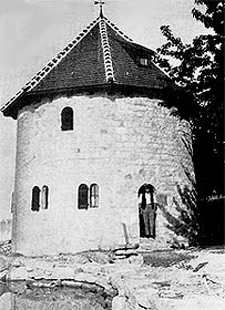Recent news of technological incursions into consciousness itself (virtual reality and altered memories); almost daily revelations about NSA spying; suggestions that social media “isolates people from reality;” it’s enough to make you want to unplug all the gadgets – at least for a while!
Renowned psychologist, Carl Jung (1875-1961) did just that, for months at a time, in a tower-house complex he started building in 1923 and continued to work on for the rest of his life. He often spent months each year living as simply as possible, without electricity or running water. It’s easy to think he lived in a simpler time and couldn’t have imagined modern complexity, but consider these words he wrote in his autobiography, Memories, Dreams, Reflections, published in 1961, the year he died:
“We rush impetuously into novelty, driven by a mounting sense of insufficiency, dissatisfaction, and restlessness. We no longer live on what we have, but on promises, no longer in the light of the present day, but in the darkness of the future, which, we expect, will at last bring the proper sunrise. We refuse to recognize that everything better is purchased at the price of something worse; that, for example, the hope of greater freedom is canceled out by increased enslavement to the state, not to speak of the terrible perils to which the most brilliant discoveries of science expose us.
………………………
…new methods or gadgets, are of course impressive at first, but in the long run they are dubious and in any case dearly paid for. They by no means increase the contentment or happiness of people on the whole. Mostly they are deceptive sweetenings of existence, like speedier communications which unpleasantly accelerate the tempo of life and leave us with less time than ever before.”
Ten years before starting the tower, Jung had a painful break with Freud that precipitated a period of disorientation and a huge uprush of the kind of unconscious contents he had witnessed in schizophrenic patients. Feeling that his experience was purposeful, he chose to submit to the unconscious with writing, art, and the effort to understand. Out of this phase of turmoil and uncertainty, his unique psychological insights were born. Paper and ink, he said, did not seem “real” enough to represent his discoveries, so in 1922 he purchased land on Lake Zurich for a “representation in stone” of his “innermost thoughts.”
Jung wrote at length of the parallel developments of his inner life and the tower, over more than three decades, saying things like:
“At Bollingen I am in the midst of my true life, I am most deeply myself”
“At times I feel as if I am spread out over the landscape and inside things, and am myself living in every tree, in the plashing of the waves, in the clouds and the animals that come and go, in the procession of the seasons.”
“I pump the water from the well. I chop the wood and cook the food. These simple acts make man simple; and how difficult it is to be simple!”
While drawing inspiration from Jung, an obvious question becomes, how do I connect with this kind of depth in the midst of my own too-hectic life? The good news is, we don’t need a tower to live in for months at a time. The bad news is we need to unplug every day and tune into activities that nourish the soul; this is often hard arrange. It takes focus, intention, and experimentation to find those things that center us and we are drawn to. Any number possibilities come to mind:
- “Spend an hour a day in a quiet room by yourself reading old stories that you find nourishing.” That’s what Joseph Campbell said when Bill Moyers asked this question during the “Power of Myth” interviews.
- Meditation, of almost any kind. This my own core practice. Zen teacher, Cheri Huber said, “If you start by watching your breath for as little as five minutes a day, it can change your life.”
- Sports that allow one to get in “the zone,” especially walking, running, or bicycling.
- Keeping a dream notebook.
- Writing, though I suspect most bloggers will have the same difficulty I have in putting words at the service of psyche – how do I turn off the writing sophistication I’ve worked so hard to gain? Can I ever truly use words in a “purposeless” manner, allowing them to go where the wish, without thinking, “Gee, this would make a good blog post?” For any chance of success, I need a definite strategy, like writing fast with a rollerball pen in cheap notebooks.
- Visual arts or crafts. Training or skill is not required for this kind of work, and in fact, can get in the way. Those with artistic training may find it useful to paint or draw with the non-dominant hand. Jung had no formal art training, but his private journal, The Red Book, only recently published, gives an idea of what may emerge if one is determined to honor the psyche.
When I truly examine my own habits, it’s clear that I fritter away enough time with gadgets each day to find the space for this kind of exploration. It doesn’t need to be with the kinds of activities I outlined above. I find it’s ok to schedule “time for inner work” the way I schedule time at the gym, but the most powerful new discoveries seem to emerge from those quiet voices at the edge of consciousness, the tiny impulse it is so easy to overlook in our busy lives.
Such an impulse woke me one night at 1:00am one morning. Instead of going back to sleep, I got up and wrote down a sentence. That led to a paragraph, and then a page, and then another. That was the start of the first (and so far only) novel I’ve finished.
Something similar happened to Jung at his tower. He gave the stonemason at a quarry precise measurements for blocks he needed to build a new wall, but one of the stones arrived in error; it was square, about 20″ on each side. When Jung saw it, he said, “That is my stone, I must have it!” Over time, he carved a testament to his life and work on stone which “stands outside the Tower, and is like an explanation of it. It is a manifestation of the occupant.”
In a seminar in 1939, Jung said:
“We have no symbolic life, and we are all badly in need of the symbolic life. Only the symbolic life can express the need of the soul – the daily need of the soul, mind you! And because people have no such thing, they can never step out of this mill – this awful, banal, grinding life in which they are “nothing but.”
The Bollingen Tower became a vital way for Jung to live the symbolic life, but he would have been the first to insist that we don’t need to carve stone or build houses to find it for ourselves. All we need is the hunger. And the will to begin.






